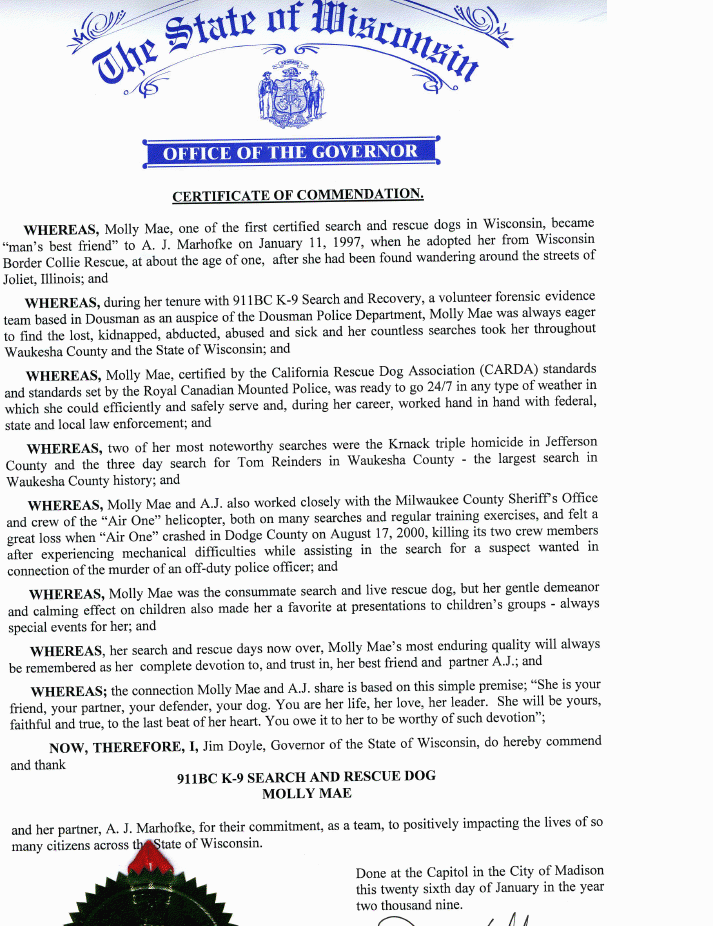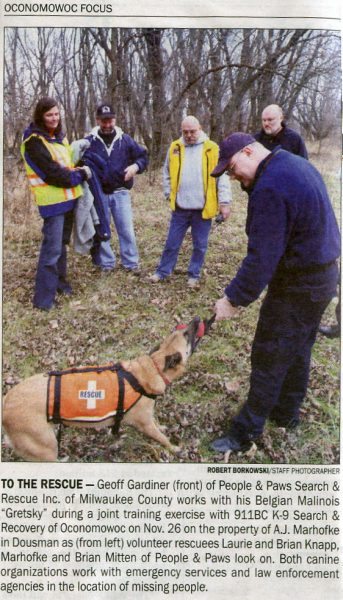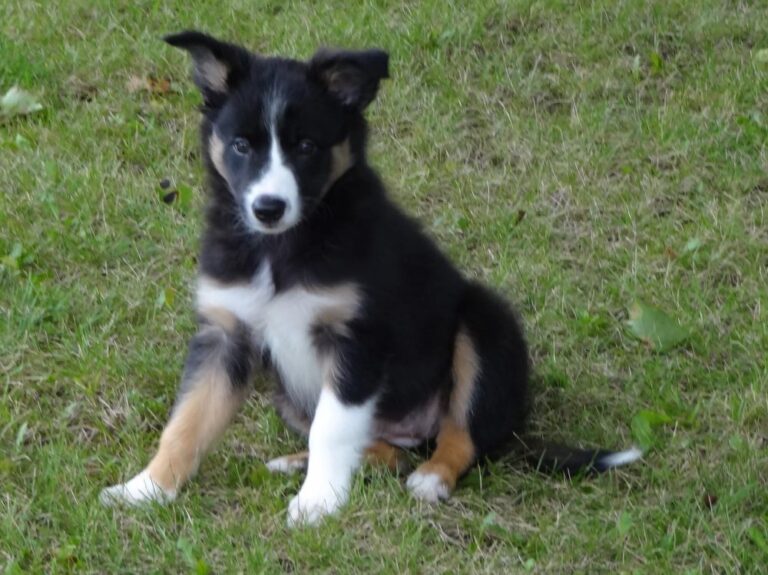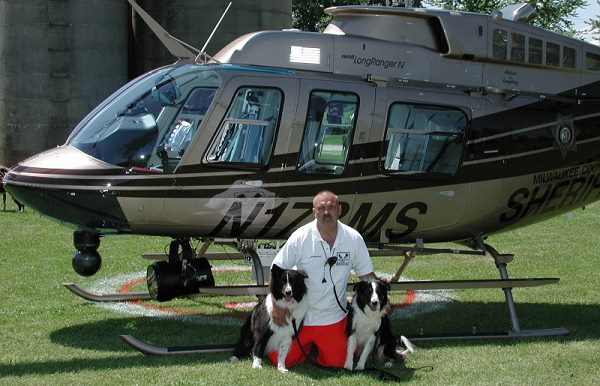Search and rescue seminar teaches the basics
By STEVE LOUDEN, Freeman Staff
DOUSMAN, WI: About 30 dogs and their handlers found their way to the third annual K-9 Search and Rescue Seminar on Saturday at 911 B.C. K-9 Search and Recovery, the home-based business of A.J. Marhofke.
“We hope to teach them what it takes to teach a dog to search for people and the beginning basics of what it takes to search”, said Michael Forest Neiman, truck lieutenant of the Dousman Fire Department. I hope (the seminar) helps somebody down the line.
Many owners, like Roger Danielsen of Waukesha, have been training their pooches on their own. And many, like Danielsen, have not taken part in many professional courses or seminars like the one held Saturday.
“I’ve been working her on my own for a couple of years”, Danielsen said of his Newfoundland, Rigel, who is named after the star in Orion’s belt. “Then I ran out of training opportunities”.
Danielsen and Rigel went to the event looking for new ideas and training methods. Danielsen also wanted to glimpse the equipment available for dog training and to make contacts in the canine community.
Danielsen is training Rigel mainly in water rescue, though they have tried other options. “At six months we took a cadaver course,” Danielsen said. “She actually found the material.”
First class
Bob Leonard, Dousman Fire Department assistant chief, lectured on the Global Positioning System, demonstrating the held-held unit and told how it must be coordinated with the right map.
“It tells you exactly where you are”, Leonard said.
“Civilian models of the GPS unit are accurate within 50 feet”, he said, “while military models pinpoint within 3 feet. The government recently signed a bill”, he added, “opening the military GPS system to civilians”.
Leonard told how GPS is useful in searches such as the one for Tom Reinders, a mentally disabled, man who walked away from his foster home near Dousman on Sept. 27, 1998. Reinders was found at the end of a 52-hour search.
“The search party learned many things during the search”, Leonard said.
“We thought it would be short search. We thought we would find him by the time the Packers game started”, Leonard said. “So we didn’t mobilize a full search right away. That was a lesson we learned”.
He added that the search party kept moving the command post down the road, causing confusion among the searchers.
“We learned not to move it”, he said.
The group also learned to keep the command post, where the progress of the search is often discussed, away from the home of the family of the lost person.
“It’s not good for the family”, Leonard said.
Another aspect
Mike Andree, identification officer with the Waukesha County Sheriff’s Department, presented another aspect of search and rescue.
“I’m the guy you don’t want at your scene, because that means someone is dead”, Andree said. “Death is my life”.
Andree’s duties revolve around the scene of a cadaver, and that includes preserving the evidence and learning what had happened.
“It’s like an archaeological dig”, Andree said. “These things take time”.
Andree demonstrated his job with the aid of Marhofke and Molly Mae, a border collie trained to search for cadavers. Molly Mae searched a small portion of field on Marhofke’s farm, and quickly located where a doll, which had been placed on a bag with scent, was buried.
article dated 6-29-2000 from the Waukesha Freeman, a local newspaper who covered the Annual 911BC Seminar.




